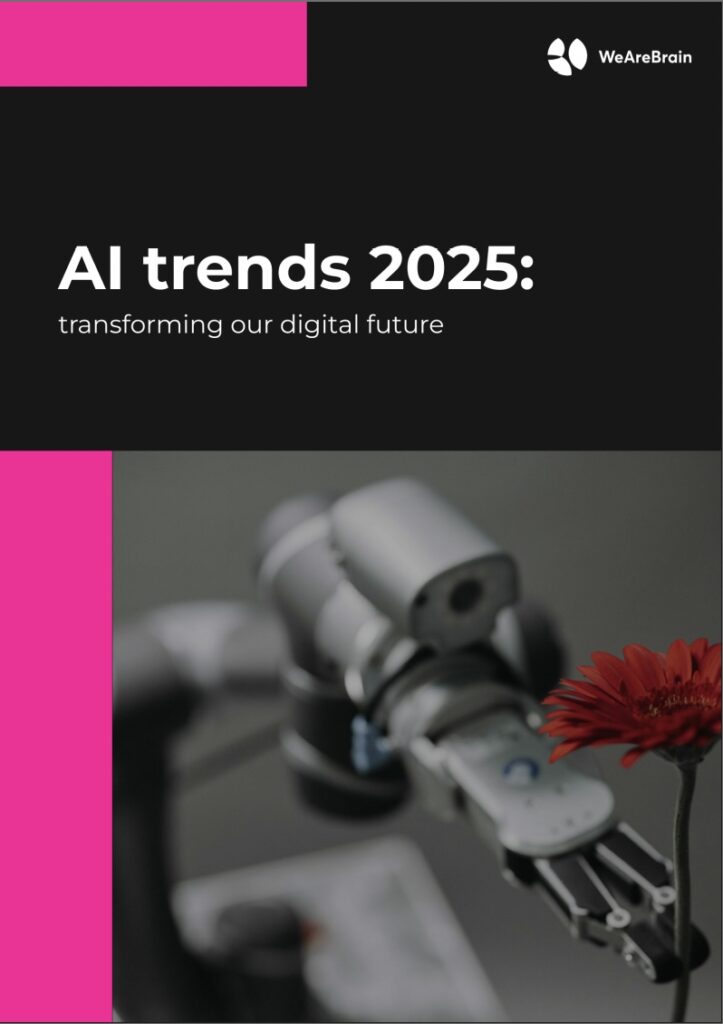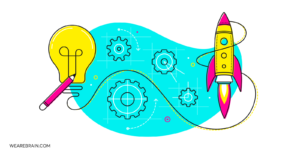Rule-based AI vs machine learning: Key differences

Dive into the distinction between rule-based AI and machine learning, uncovering their unique capabilities and how they shape the landscape of artificial intelligence.
Key takeaways
- Contrasting Approaches: Rule-based AI operates on predefined rules, while machine learning evolves its rules from data analysis.
- Rule-based AI: Ideal for deterministic tasks with clear, straightforward rules and limited data.
- Machine Learning: Suited for complex tasks requiring adaptability and large data sets for pattern recognition.
- Application Fit: Rule-based systems excel in precision-oriented tasks; machine learning thrives in predictive analytics and dynamic environments.
- Hybrid Systems: Combining both approaches offers a versatile solution, balancing precision with adaptability.
- Project Needs Dictate Choice: The decision between rule-based AI and machine learning depends on the specific requirements of the project.
Two approaches
In order to obtain conclusions from data using various types of artificial intelligence (AI), we commonly utilise one of two contrasting approaches: rules-based and machine learning. In some cases, however, it is possible to use both approaches together to get maximum value. With AI commoditisation shaping our digital landscape, it is crucial to understand both the strengths and weaknesses of both technologies to identify the right solution for your business.
If you’re looking for interesting approaches to understanding more about artificial intelligence, here are some of our best AI books to provide a holistic understanding of the technology.
What is rule-based AI?
A system designed to achieve artificial intelligence (AI) via a model solely based on predetermined rules is known as a rule-based AI system. The makeup of this simple system comprises a set of human-coded rules that result in pre-defined outcomes. These AI system models are defined by ‘if-then’ coding statements (i.e. if X performs Y, then Z is the result). Two important elements of rule-based AI models are “a set of rules” and “a set of facts” and by using these, developers can create a basic artificial intelligence model. These systems can be viewed as a more advanced form of robotic process automation (RPA).
To learn more about robotic process automation (RPA), visit our blog page.
Rule-based AI models are deterministic by their very nature, meaning they operate on a simple yet effective ‘cause and effect’ methodology. This model is immutably structured and unscalable, therefore it can only perform the tasks and functions it has been programmed for and nothing else. Due to this, rule-based AI models only require very basic data and information in order to operate successfully.
What is machine learning AI?
A system designed to achieve AI utilising the power of machine learning (ML) is known as a machine learning model. Machine learning systems are designed to define their own set of rules based on data outputs it has access to, without human intervention. By only taking the outputs from data or experts, ML systems thus utilise a probabilistic approach: one that takes into account variations and probabilities to create informed results. This means they constantly evolve, develop, and adapt when new information is added when a human is in the loop. Find out more about what HITL means in a previous deep-dive blog.
Predominantly used as an alternative method to address some of the challenges of rule-based systems, such as practical training of large datasets, ML systems are used on larger projects that require scalability. As a direct counterpart to rules-based AI systems, ML systems are mutable and nimble, allowing them to transform data or value through mutable coding languages. The more data you feed the system, the more accurate it becomes in identifying patterns.
🔍 AI models are advancing fast, and the line between rule-based systems and machine learning is shifting. Our AI Trends 2025 report looks at what’s next for AI decision-making. Download at the end 👇
Choosing the right approach
Based on the prerequisites and functionalities of rules-based AI and ML systems, which approach is best? As in all cases, it depends on your project requirements.
Rule-based systems
Rules-based systems are perfectly suited to projects and applications that require small amounts of data and simple, straightforward rules. Think of this as a fit-for-purpose system: one that is highly effective within its predetermined parameters, and pretty useless outside of them. Thus, rules-based systems are great for repetitive processes that require little-to-no human decision-making, such as fault analysis, email routing using triggers, and basic searching, among many others.
Rules-based systems are great if you need information quickly, as the limited parameters of the systems allow for speedy results. Additionally, rules-based systems are seen as incredibly pedantic and thorough which is why they are often used in processes where errors cannot be tolerated, such as medical diagnosis and finance processing. Many AI music production tools utilise this type of system.
Machine learning systems
On the other hand, ML systems are commonly used when large volumes of relevant data records are available for making more accurate predictions. For any processes that have multiple factors, situations, numerous potential outcomes, ML systems are your best bet.
ML systems are used when you are required to predict an outcome but do not necessarily know how to do so. For example, ML systems are great for sales lead qualifications and customer support automated responses — any situations that have multi-variables. For this reason, ML systems are best suited to rapidly changing environments like e-commerce recommendations, virtual influencers, and general forecasting. YouTube and Netflix auto-suggestions are a great example of this, as the algorithms learn from your activity and are trained to assess your preferences and suggest content based on your preferences.
If you are looking for more technical detail on how to best choose which development route is best for you then we suggest reading this thorough article by Capital One.
Best of both
There are some systems available that combine rules-based AI systems with ML systems in a ‘best of both worlds’ situation. By combining the two approaches, businesses are able to make up the shortfall of each system, providing them with a thorough system that is both 100% accurate and robust.
This comes in the form of rule-based machine learning (RBML) systems that are able to identify and adapt their own set of rules. The defining characteristic of these systems are their ability to identify and utilise a set of relational rules that collectively represent the knowledge captured by the system. It does this by utilising its learning algorithm and relying on a knowledge base, meaning it does not require human coding or intervention for defining ‘if-then’ statements.
Summary
Both rules-based systems and ML systems have their associated strengths and weaknesses. But these can only be determined by your project requirements. If you are in need of precision within a relatively small framework parameter then rules-based systems are for you. If, on the other hand, you have access to large amounts of data and need to predict something, then ML systems are your best bet. If, however, you have business needs that require both precision and large data processing used to inform predictions and forecasting, then a hybrid approach may very well be what you are after.
AI decision-making is evolving beyond rule-based logic and machine learning. The AI Trends 2025 report breaks down where things are headed👇

Enter your email to download the AI Trends 2025 Report instantly.
By filling out your email address you consent to receive WeAreBrain’s newsletter with its latest news. WeAreBrain does not share or sell your personal information.
Mario Grunitz
Working Machines
An executive’s guide to AI and Intelligent Automation. Working Machines takes a look at how the renewed vigour for the development of Artificial Intelligence and Intelligent Automation technology has begun to change how businesses operate.







